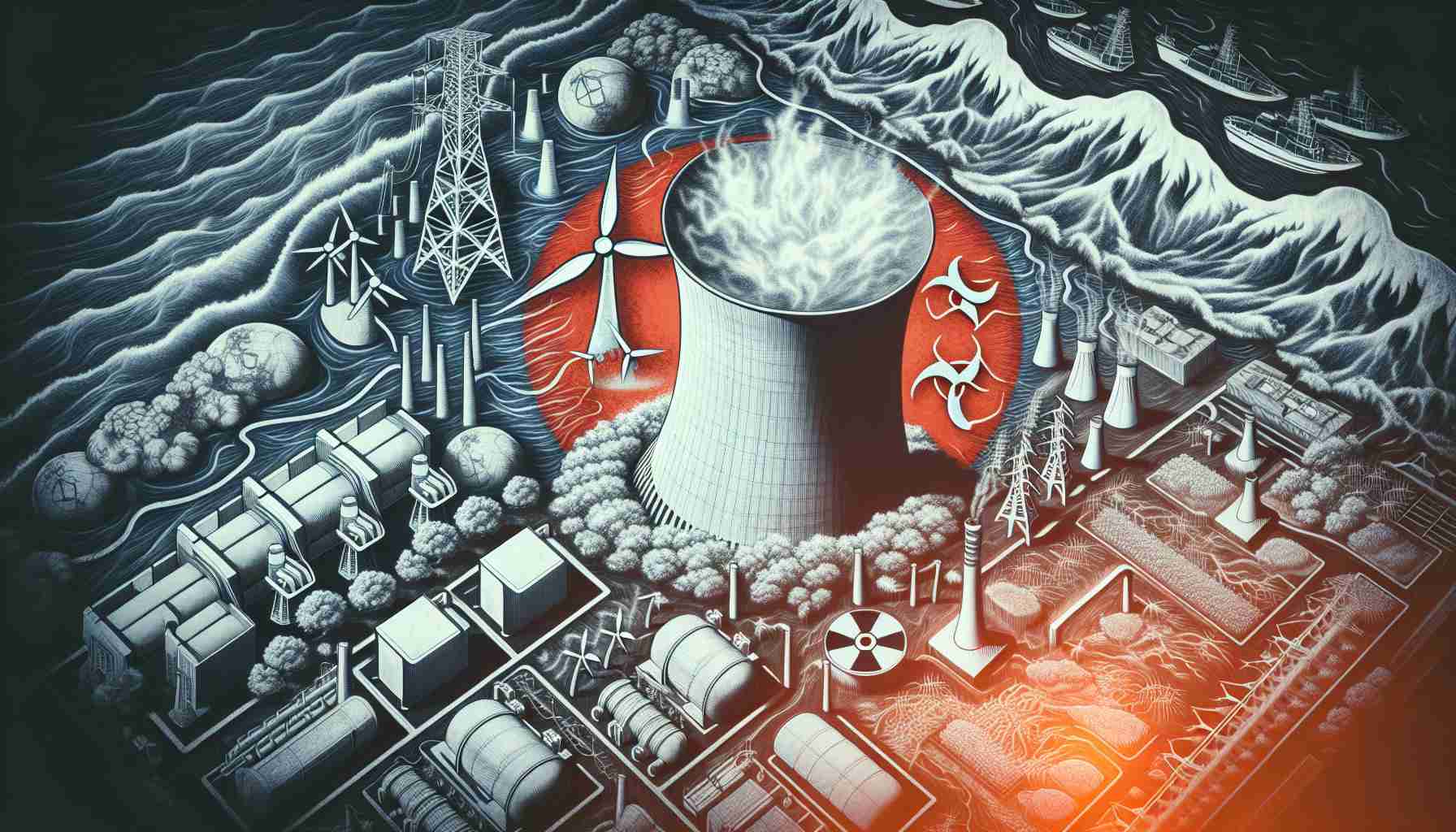- Sizewell Beach is the site for a major nuclear construction project aimed at powering 6 million homes.
- The initiative involves building two identical reactors to improve efficiency and reduce costs.
- Replicating proven designs aims to address the nuclear industry’s history of expensive and delayed projects.
- Nuclear power is considered essential for combating climate change due to its reliable, low-carbon energy output.
- There is a global increase in reactor construction amidst rising demand for clean energy solutions.
- Skepticism exists over overcoming budget issues and long timelines, despite some successful international models.
- Innovation, such as small modular reactors, may play a key role in advancing nuclear energy’s viability.
Deep behind the golden sands of Sizewell Beach, a construction project is quietly brewing that could transform energy production in the UK. Nestled on a sprawling 900-acre site, two nuclear reactors destined to deliver power to a whopping 6 million homes are set to rise — mirroring their predecessor hundreds of miles away at Hinkley Point C.
What makes this initiative astonishing is the strategy behind it: building identical reactors aims to tackle the industry’s notorious struggles with skyrocketing costs and endless delays. Experts lament how the more experience the nuclear sector racks up, the pricier and slower projects become. By replicating proven designs, the hope is to finally cultivate a “positive learning curve” in nuclear construction.
This push isn’t just about efficiency; it’s vital for the future of energy. Nuclear power is hailed as essential in the fight against climate change, providing large quantities of reliable power without carbon emissions. With the International Energy Agency noting a surge in global reactor construction, the stakes have never been higher.
But can these ambitious plans overcome the historical hurdles of budget blowouts and long timelines? While some countries showcase successful models, skepticism remains. As experts discuss the role of standardized designs and modern technologies like small modular reactors, the narrative unfolds: can innovation and repetition finally unlock a cleaner, nuclear-powered future?
The takeaway is clear: as global demand for clean energy surges, the race is on to harness nuclear’s potential — and Sizewell C might just lead the charge!
Unlocking the Future of Energy: Sizewell C’s Revolutionary Nuclear Initiative
In recent developments regarding the Sizewell C construction project, various facets have emerged that are shaping the future of nuclear energy not just in the UK, but globally. Here’s a breakdown of some essential and new information that adds depth to what has been reported:
Market Forecasts
The global nuclear energy market is expected to expand significantly, with projections estimating a compound annual growth rate (CAGR) of approximately 8% from 2023 to 2030. This growth is bolstered by increasing energy demands, goals for carbon neutrality, and advancements in nuclear technology. The Sizewell C project is part of this broader trend, aiming to integrate into a clean energy future.
Pros and Cons
Pros:
– Clean Energy Production: Nuclear energy offers a stable and reliable power supply without the carbon emissions linked to fossil fuels.
– Job Creation: The construction and subsequent operation of Sizewell C are expected to generate thousands of jobs, providing a boost to the local and national economy.
Cons:
– Safety Concerns: Nuclear energy, despite its benefits, is often met with apprehension regarding potential accidents and long-term waste disposal.
– High Initial Costs: While the aim is to replicate designs to reduce costs, the initial investment for nuclear facilities remains substantial.
Security Aspects
Security measures around nuclear plants have become increasingly stringent in light of international tensions and cybersecurity threats. Sizewell C will likely incorporate advanced security technologies, focusing on both physical and cyber defenses to protect sensitive information and infrastructure.
Innovations
The project also leverages innovations in technology, including digital control systems and enhanced safety protocols, which differ from older reactor designs. This approach aims to improve operational efficiency and maintain high safety standards.
Limitations
There are significant challenges that remain:
– Budget Overruns: Despite the intent to contain costs, the history of nuclear projects shows a tendency for expenses to balloon.
– Time Delays: Even with standardized designs, regulatory approvals and public consultations often contribute to lengthy timelines.
Current Trends
The recent trend in nuclear energy emphasizes sustainability, with a shift towards smaller, more flexible projects such as small modular reactors (SMRs). These designs can be deployed more rapidly and are often more cost-effective than traditional large reactors.
Insights and Predictions
Experts predict that if Sizewell C is successful, it could serve as a model for future nuclear projects worldwide. The focus on proven reactor designs may set a new standard in the global nuclear landscape, improving investor confidence and public perception.
—
Key Questions About Sizewell C
1. How will Sizewell C contribute to the UK’s energy needs?
– Sizewell C is designed to produce enough electricity to power approximately 6 million homes, significantly contributing to the UK’s goal of achieving net-zero carbon emissions by 2050.
2. What are the expected timelines for construction and operational start?
– Initial estimates suggest that construction could take about 10 years, with operations potentially beginning in the early 2030s, provided there are no major delays.
3. What role do standardized reactor designs play in the future of nuclear projects?
– Standardized designs aim to enhance predictability, reduce costs, and limit complexity, enabling countries to implement nuclear energy solutions more effectively and efficiently.
For more insights on this transformative initiative and the future of energy in the UK, visit EDF Energy.
The source of the article is from the blog klikeri.rs













